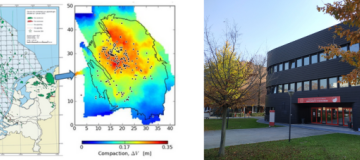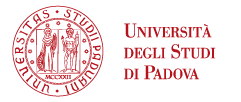
Seminar - Induced seismicity due to gas extraction: Experimental research on rock and fault behaviour in the Groningen gas field
Speaker: Dr. Andrè Niemeijer - Utrecht University, Netherlands | Tuesday 25 February 2025 | 4,30 PM - Arduino Classroom
25.02.2025
In 2012, a Mw 3.6 earthquake occurred in Huizinge, a small town in the North of the Netherlands. The earthquake was the result of the extraction of methane from one of the largest on-shore gas fields in the world, namely the Groningen gas field. Induced seismicity had been recorded since the 1990s, but the relatively large magnitude of the 2012 event caused significant societal unrest, leading to political discussions and the eventual shut-down of gas production at the end of 2024.
In this presentation, I will summarize recent results from research done in the High Pressure and Temperature laboratory of Utrecht University on the deformation of both reservoir rocks and faults. Our compaction experiments under in-situ reservoir conditions combined with microstructural observation indicate that there is significant (up to 50%) permanent deformation, resulting from compaction of clays coating grain contact and grain sliding. Time-dependent deformation occurs due to subcritical crack growth.
Frictional sliding experiments demonstrate that faults within the reservoir show significant time-dependent strength increase, which is key ingredient for enabling earthquake nucleation. Slip pulse experiment further demonstrate that fast local temperature rise causes local pore pressure increase which dynamically weaken faults, allowing for rupture propagation. Importantly, the amount of weakening depends on the type of weakening as well as on the pre-existing fault (micro)structure. The experimentally derived frictional parameters constrain earthquake rupture models which show that fault geometry and pre-existing stress levels provide strong controls on the locations of earthquake nucleation and arrest.





